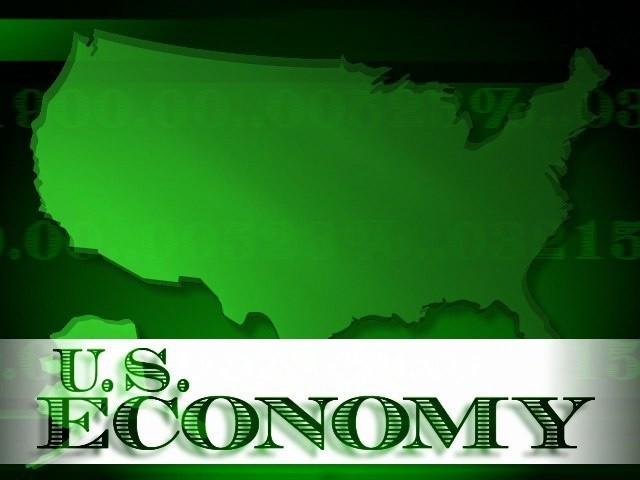The overall pace of homes started rose 6.8 percent last month to a seasonally adjusted annual rate of 914,000, the Commerce Department said Tuesday. That followed a 14.8 percent decline in April. May's rate is still below March's pace of more than 1 million - the highest in five years.
Single-family home construction, nearly two-thirds of the market, rose 0.3 percent last month to an annual rate of 599,000. That followed two months of declines.
Apartment construction, which is more volatile, surged 21.6 percent to an annual rate of 315,000. That came after a big drop in April.
Applications for building permits, a gauge of future construction, fell 3.1 percent in May to a seasonally adjusted 974,000, remaining close to a five-year high hit in April.
Overall, the report points to more evidence of a housing recovery that has become sustainable. New-home construction has risen 28.6 percent since May of 2012.
Improved hiring and low mortgage rates have encouraged more people to buy homes. The increased demand, along with a tight supply of homes for sale, has pushed home prices higher.
Stronger housing markets are helping the economy grow and offsetting some of the drag this year from higher taxes and federal spending cuts.
A better outlook for housing has made builders more optimistic, leading to more construction and jobs. The National Association of Home Builders/Wells Fargo builder sentiment index released Monday rose to 52 this month, up from 44 in May. That was the highest reading in seven years and the largest monthly increase in more than a decade.
A reading above 50 indicates more builders view sales conditions as good, rather than poor.
Still, some markets are recovering faster than others. In May, housing starts rose 17.8 percent in the South and 5.7 percent in the West. But they fell 13.7 percent in the Midwest and 9 percent in the Northeast.
Many of the nation's major homebuilders have reported strong annual growth in sales during the spring home-selling season. The increased demand has paved the way for builders to raise prices and ramp up construction of more homes, despite lingering concerns over rising costs for land, building materials and labor.
Though new homes represent only a fraction of the housing market, they have an outsize impact on the economy. Each home built creates an average of three jobs for a year and generates about $90,000 in tax revenue, according to NAHB statistics.
CONSUMER PRICES UP 0.1 PCT IN MAY
U.S. consumer prices rose slightly in May as higher energy costs were partly offset by cheaper food. The small increase comes after two straight declines, underscoring that American consumers are benefiting from mild inflation.
The consumer price index ticked up a seasonally adjusted 0.1 percent last month, only the second increase in seven months, the Labor Department said Tuesday. Consumer prices fell 0.4 percent in April, the largest decline in four years. In the past 12 months, prices have increased just 1.4 percent. That's up from a 1.1 percent annual pace in April, which was the smallest in 2 1/2 years.
Slow economic growth and high unemployment have kept wages from rising quickly. That's made it harder for retailers and other firms to raise prices.
Still, tame inflation has helped consumers increase spending this year, despite slow income growth and higher Social Security taxes. It also makes it easier for the Federal Reserve to continue its extraordinary efforts to boost the economy.
And while inflation is low, economists say it isn't low enough to alarm Fed policymakers. Tuesday's report "won't prevent the Fed from beginning to reduce its monthly asset purchases, probably beginning in September," said Paul Ashworth, an economist at Capital Economics.
In May, higher natural gas and electricity costs pushed up energy prices 0.4 percent. Gas prices were flat. Food costs fell 0.1 percent, as grocery prices dropped by the most in almost four years.
Outside the volatile food and gas categories, core prices rose 0.2 percent in May, driven up by higher rents and rising prices for hotels, clothing and air fares. Core prices have increased 1.7 percent in the past 12 months, in line with the Federal Reserve's inflation target of 2 percent.
The cost of health care is rising at a much slower pace than its historical norm, helping to limit inflation. The cost for prescription and nonprescription drugs fell 0.7 percent in May, the steepest decline on record. And the cost for medical services was unchanged in May.
In the past 12 months, overall health care prices rose just 2.2 percent, the smallest yearly increase for that category in more than 40 years.
Consumers have kept spending at a modest pace in recent months. Retail sales rose at a healthy clip in May from April, the Commerce Department said last week. Americans spent more on cars and trucks, home improvements and sporting goods.
Wholesale prices rose 0.5 percent in May, as gas and food costs increased, the Labor Department said last week. But in the past year they have risen just 1.7 percent.
Fed policymakers are meeting Tuesday and Wednesday to discuss the economy's health and consider their next moves.
Steady job gains and resilient consumer spending have fueled intense speculation that the Fed may soon start reducing the pace of its monthly bond purchases. That's caused heavy volatility in stock and bond prices.
The Fed is purchasing $85 billion a month in bonds to keep longer-term interest rates down. That's intended to encourage more borrowing, investing and spending. The Fed says it will continue to buy bonds until the job market improves substantially.
The Fed also says it plans to keep the short-term interest rate it controls at a record low near zero until the unemployment rate falls below 6.5 percent, provided inflation remains under control. The unemployment rate ticked up in May to 7.6 percent, though it is down 0.6 percentage points in the past year.

http://accesswdun.com/article/2013/6/262655
